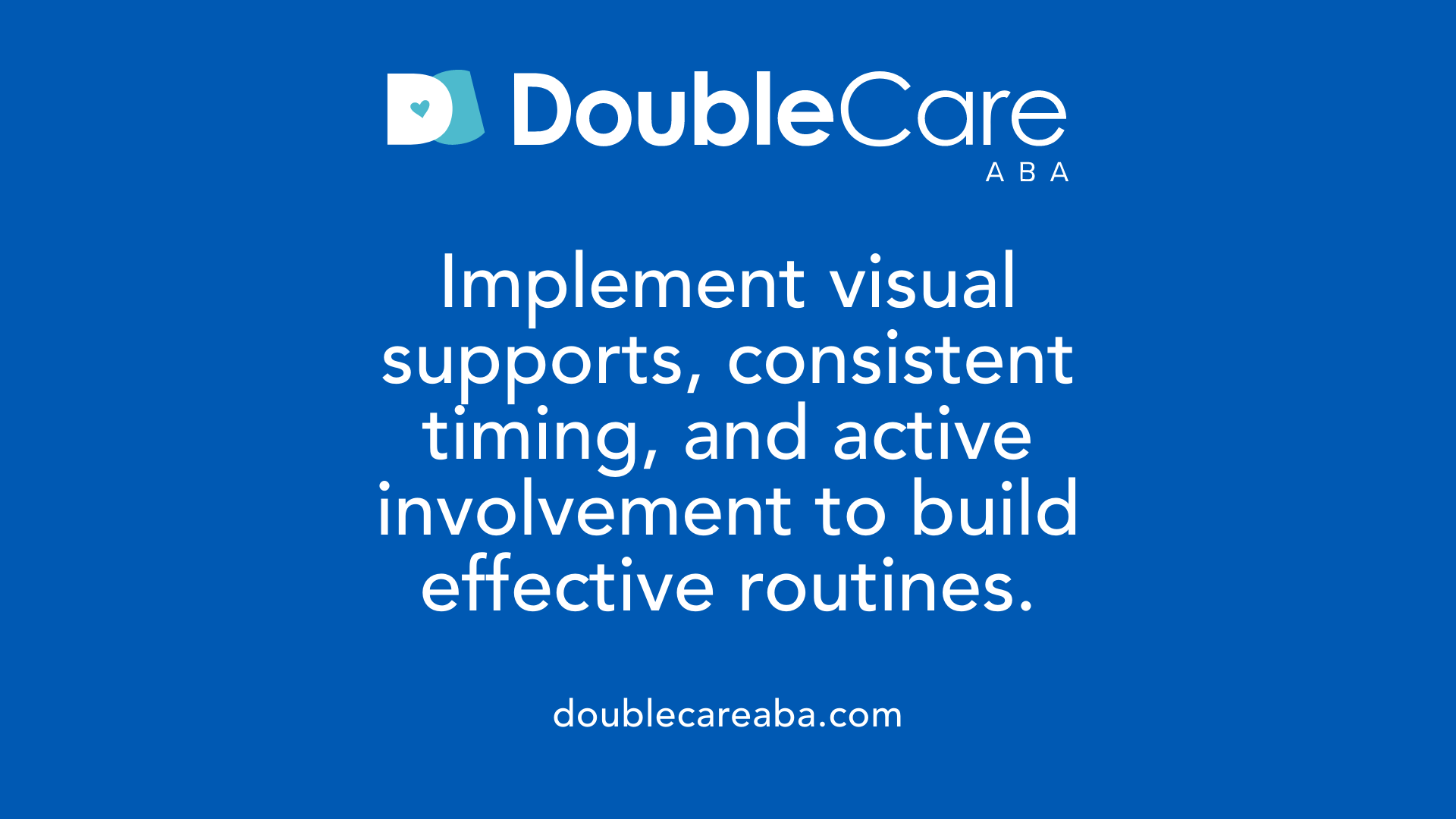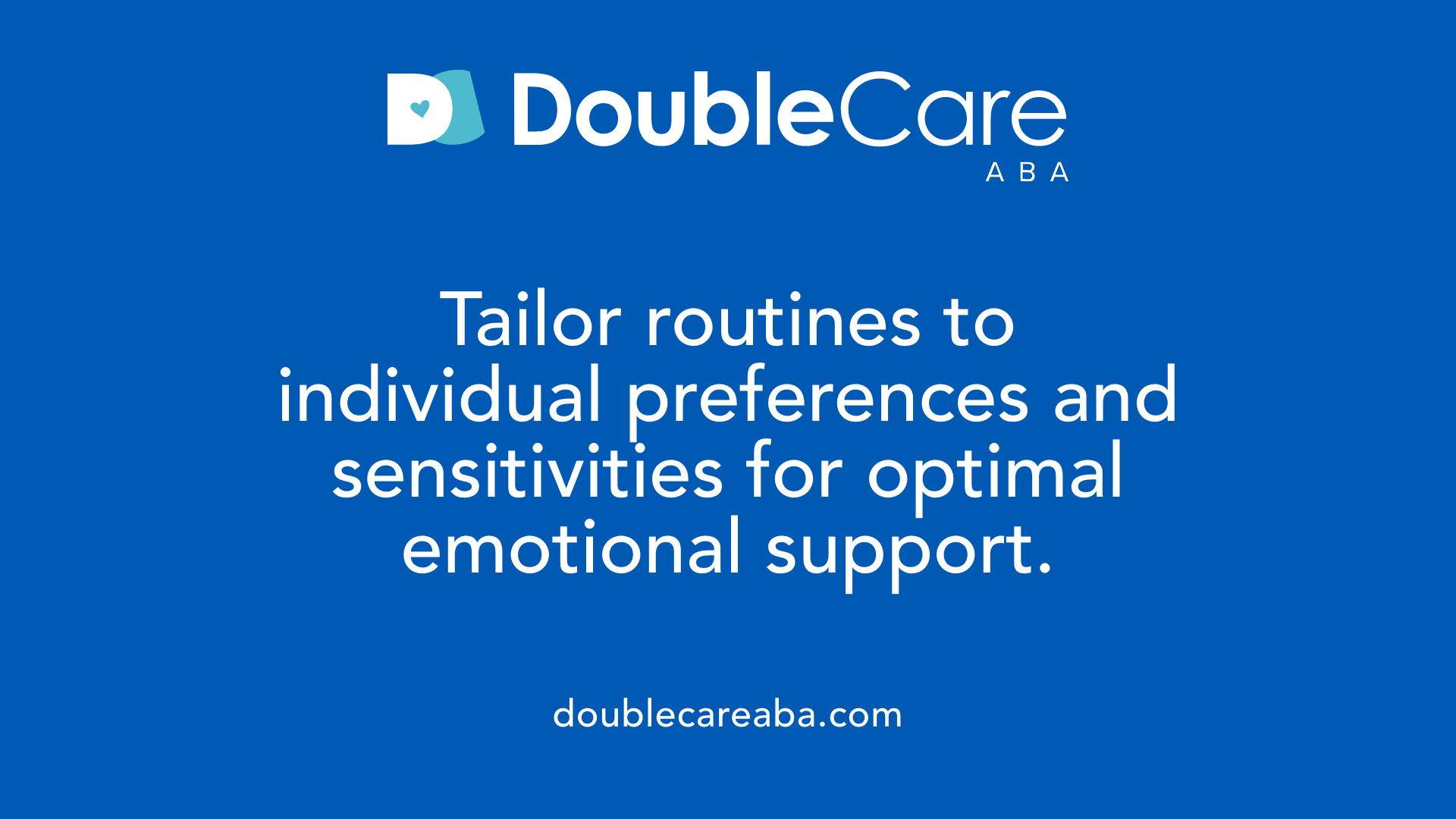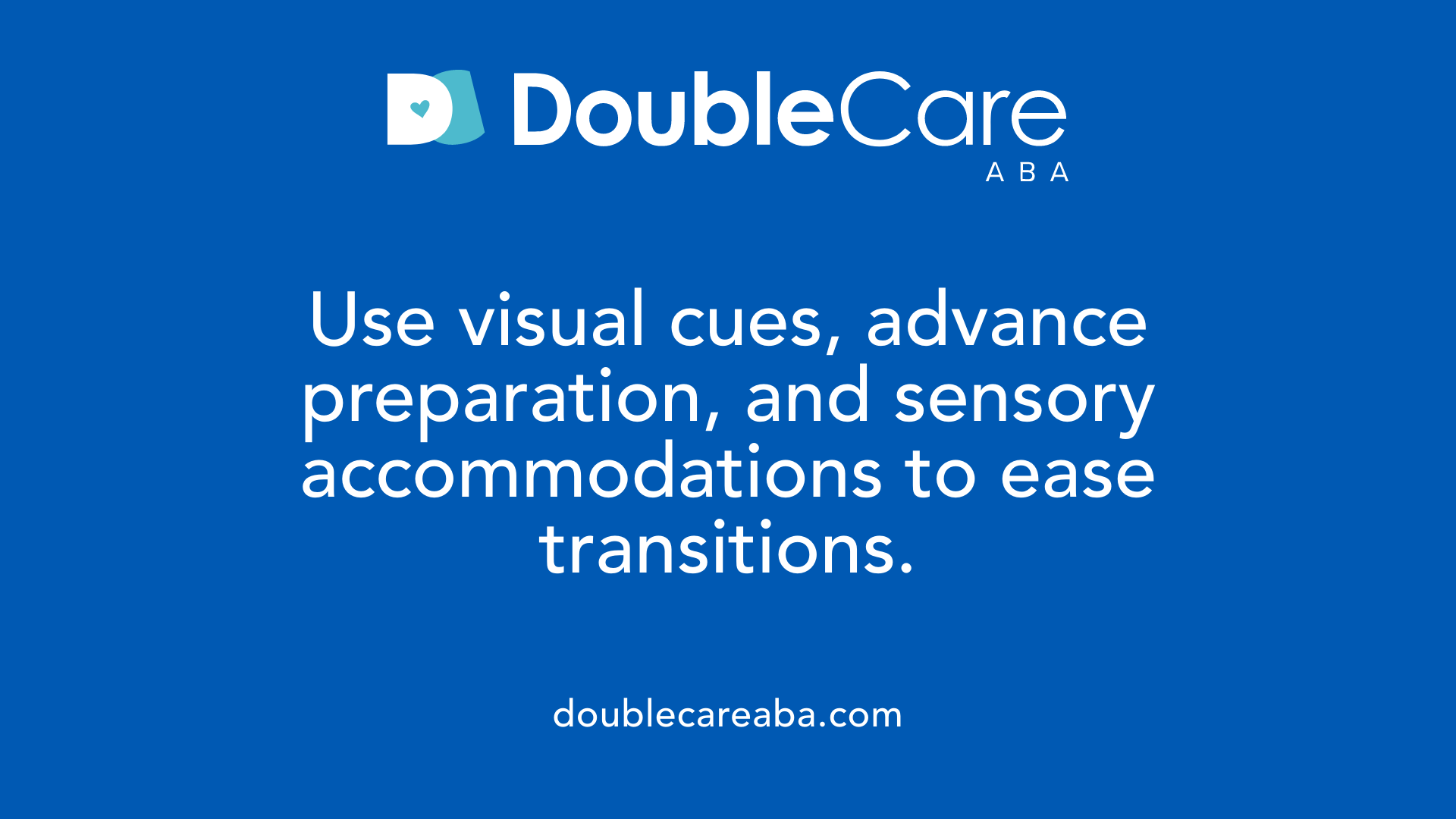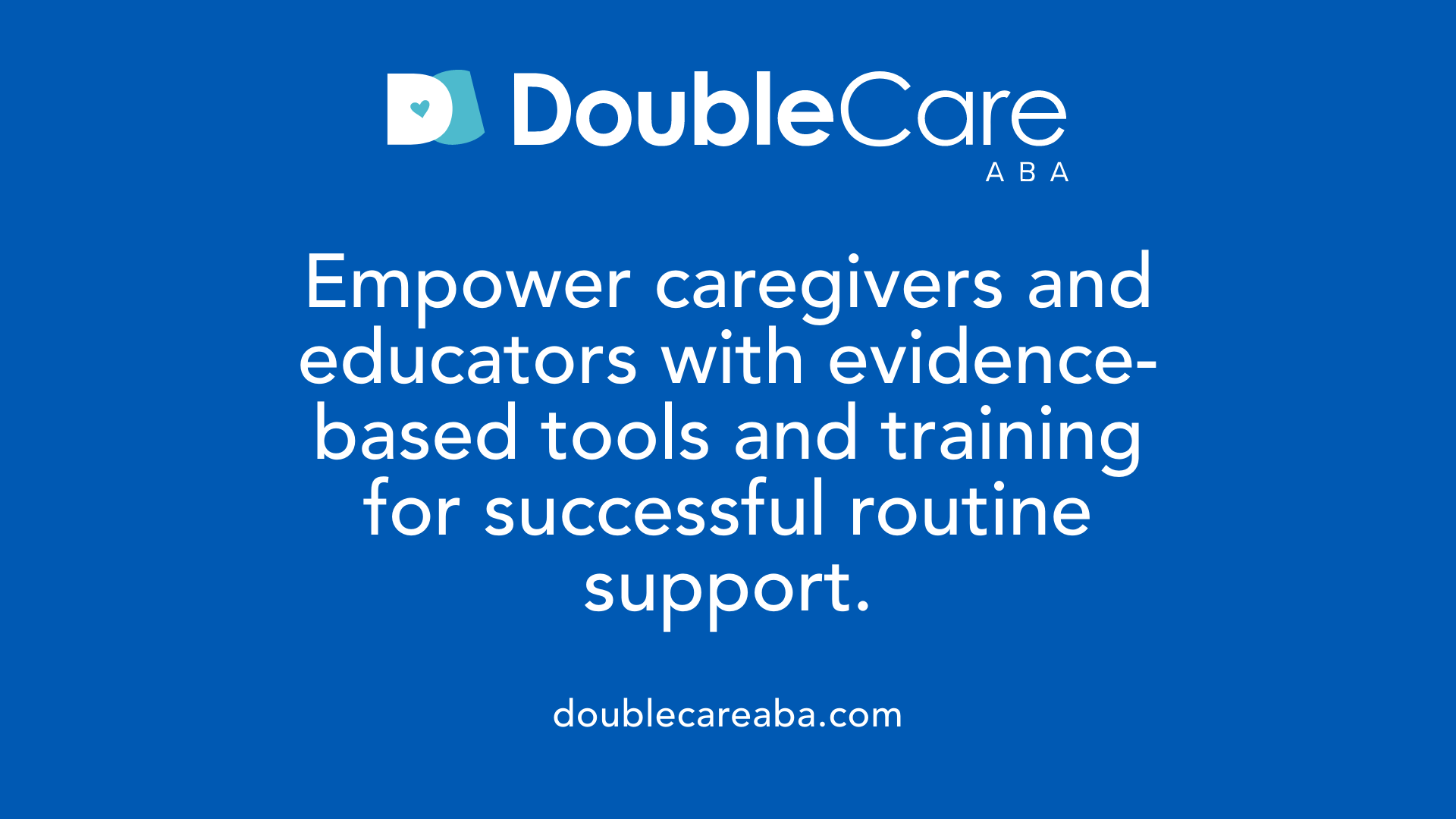Autism Routines
The Power of Structure: Enhancing Life Quality for Autistic Individuals

Understanding the Importance of Routines in Autism
Routines serve as a cornerstone in the daily lives of people with autism, providing essential predictability and stability. This article explores the multifaceted benefits of routines, practical strategies for implementation, and how personalized approaches can support emotional regulation and overall well-being.
The Benefits of Routines for Autistic Individuals
What are the benefits of routines for individuals on the autism spectrum?
Routines offer a vital framework for autistic people, providing a sense of order and predictability. This structure helps them feel more secure, reducing feelings of uncertainty that can cause stress or anxiety. Consistent daily activities and familiar environments give individuals a sense of control over their world.
By establishing clear expectations, routines can significantly lower stress levels. When routines are predictable, autistic individuals are less overwhelmed by surprises or sudden changes, which helps prevent meltdowns or challenging behavior.
Routines also support the development of important skills. They serve as opportunities for practicing self-care, independence, and social skills. For example, following a set morning routine can teach time management and self-regulation.
Visual supports such as schedules, timers, and social stories enhance understanding, making transitions between activities easier and less stressful. These tools help individuals anticipate what's next, reducing confusion and promoting smoother daily experiences.
Furthermore, routines foster emotional regulation, helping autistic individuals manage their feelings more effectively. When routines are in place, they create a stable environment that encourages confidence and self-esteem.
In summary, routines are a cornerstone for improving behavior, emotional well-being, and overall quality of life for autistic individuals. They lay the foundation for growth, independence, and happiness by offering predictability, reducing anxiety, and facilitating skill acquisition.
Strategies for Creating and Maintaining Effective Routines

What strategies can be used to create, implement, and maintain effective routines for autistic individuals?
Creating effective routines for autistic individuals involves a thoughtful and personalized approach. One of the first steps is developing a personalized schedule that reflects their unique preferences, sensitivities, and strengths. This tailored approach makes routines more engaging and less stressful, encouraging participation.
Visual supports play a crucial role in helping autistic individuals understand and anticipate daily activities. These supports can include picture schedules, written instructions, or visual symbols, which reduce uncertainty and foster independence. Using visual tools also makes transitions smoother and helps in managing changes or surprises.
Maintaining consistency in timing is essential. Setting specific times for meals, play, and sleep creates predictability, which provides a sense of security. Tools like timers and countdown clocks are beneficial for signaling upcoming transitions, helping children prepare emotionally and cognitively for changes.
Incorporating activities that the child loves, known as preferred activities, into routines can boost motivation and cooperation. Offering choices within limits empowers children, giving them a sense of control and encouraging engagement.
Involving children in planning routines promotes a sense of ownership and caters to their interests. When children have a say in their routines, they are more likely to follow and enjoy them.
Finally, routines should be regularly reviewed and adjusted as the child's needs and preferences evolve. This ongoing process ensures that routines stay relevant and supportive of emotional regulation, developmental progress, and overall well-being.
Implementing these strategies creates a stable foundation that helps reduce anxiety, develop independence, and promote positive growth for autistic individuals.
Role of Routines in Therapy, Education, and Daily Living

What is the role of routines in therapy, education, and daily living for autistic children and adults?
Routines are fundamental in helping autistic individuals build skills, gain independence, and feel secure across different areas of life. They provide a predictable structure that reduces uncertainty and anxiety, making daily life more manageable.
In therapy and education settings, routines facilitate learning by creating consistent environments where skills can be practiced repeatedly. Visual supports like schedules, social stories, and timers help children understand what to expect and when, leading to better focus and engagement. These tools also aid in teaching communication, self-care, and problem-solving.
Routines are especially valuable for smooth transitions between activities or environments, decreasing behavioral challenges often triggered by change. For example, a set sequence for going from classwork to playtime minimizes stress.
For everyday living, routines support emotional regulation by providing stability and control. They help individuals manage sensory sensitivities and reduce meltdowns or tantrums. Consistent daily schedules—including morning routines, meal times, bedtime rituals, and social interactions—enable autistic people to navigate their environment confidently.
Supporting skills development and reinforcement involves using positive reinforcement strategies within routine activities. These routines are tailored to individual preferences, abilities, and sensitivities, which encourages participation and mastery of essential life skills.
Overall, structured routines grounded in behavioral and developmental principles are crucial for creating nurturing environments where autistic individuals can thrive, learn new skills, and develop independence.
Personalizing Routines to Support Emotional Regulation

How can routines be personalized to support emotional regulation in autistic individuals?
Creating routines that cater to the specific needs of autistic individuals involves more than just establishing a set sequence of activities. It requires thoughtful customization based on personal preferences, sensory sensitivities, and interests.
Incorporating individual preferences into routines helps make daily activities more engaging and less stressful. For example, if a child loves animals, routines can include activities such as talking about favorite animals or using animal-themed visual supports. Sensory sensitivities should be considered, with adaptations like quiet spaces, soft lighting, or sensory-friendly materials to help the individual feel safe and calm.
Visual supports such as schedules, timers, and cues play a crucial role in reducing anxiety. These tools provide clear, tangible representations of what comes next, helping individuals anticipate transitions and regain control when emotions run high. Calm-down spaces equipped with sensory-friendly items, like soft textures or calming lights, offer a designated area where an individual can self-regulate during moments of emotional distress.
Teaching coping skills like deep breathing, mindfulness, or self-awareness techniques can be integrated into routines. These strategies support emotional regulation, especially during challenging moments.
Offering choices within routines enhances a sense of autonomy and control. For example, allowing an individual to select which activity to start with or choose a preferred calming tool fosters independence and cooperation.
Regular review and gradual adjustments are essential to keep routines effective and aligned with changing needs. This process includes evaluating what works well, making small modifications over time, and involving the individual in planning to ensure routines stay relevant.
Finally, sensory-friendly adaptations—such as incorporating textures, sounds, or visual elements that are pleasant for the individual—help create an environment that promotes emotional well-being.
By blending personalized interests, visual supports, calming strategies, choices for autonomy, and sensory considerations into routines, caregivers and therapists can significantly support emotional resilience in autistic individuals. These tailored routines make daily life more predictable, manageable, and emotionally supportive, fostering growth and self-regulation.
Managing Transitions and Unexpected Changes

How should transitions and changes within routines be managed for autistic individuals?
Managing transitions and unexpected changes is vital to supporting autistic individuals, as sudden shifts can cause distress, anxiety, and behavioral challenges. An effective approach involves multiple strategies designed to prepare and comfort the individual.
Visual supports play a crucial role. Tools such as visual schedules, social stories, and countdown timers help make changes predictable. For example, a visual schedule can show upcoming activities, so the person understands what to expect next. Social stories can describe the reason for the change, what will happen, and how to cope with it, easing worries.
Providing advance notice is essential. Giving verbal reminders, using images or objects, and explaining upcoming changes well before they happen enable an autistic person to mentally prepare. Visual timers or countdown clocks can show the passage of time, helping them anticipate transition points.
Gradual preparation makes a significant difference. Introducing new activities or changes in a step-by-step manner allows the individual to adapt without feeling overwhelmed. Incorporating sensory accommodations, such as quiet spaces, calming textures, or preferred sensory items, can also ease discomfort during transitions.
Encouraging flexibility through positive reinforcement promotes adaptive behaviors. Rewarding attempts at adjusting to change or trying new routines reinforces resilience and reduces resistance.
Collaboration among caregivers, teachers, and therapists ensures a consistent and personalized approach. Understanding each person's sensory sensitivities, communication preferences, and behavioral patterns allows for tailored strategies that support smoother transitions.
Combining structured routines with clear, supportive communication fosters confidence. Patience, empathy, and positive reinforcement during transitions help autistic individuals feel secure and manage change more effectively.
In summary, managing routine changes involves visual supports, advance notice, gradual introduction, sensory considerations, reinforcement, and teamwork. These strategies together create a predictable, accommodating environment that eases the stress of change, promotes independence, and enhances overall well-being.
Supporting Caregivers, Parents, and Educators in Routine Implementation
 Supporting those who care for autistic individuals is essential for establishing effective routines that promote stability and well-being. Evidence-based guidance emphasizes the importance of creating consistent, predictable environments that help reduce anxiety and foster independence.
Supporting those who care for autistic individuals is essential for establishing effective routines that promote stability and well-being. Evidence-based guidance emphasizes the importance of creating consistent, predictable environments that help reduce anxiety and foster independence.
Using visual supports, such as visual schedules, timers, and social stories, contributes significantly to understanding and following routines. Consistency across various settings—home, school, and community—helps reinforce these routines, making transitions smoother and less stressful.
Training programs and coaching sessions play a vital role in equipping caregivers, parents, and educators with practical skills. Approaches like caregiver-mediated interventions, parent coaching, and structured programs from organizations like the World Health Organization’s CST provide accessible, often remote, training options. These programs teach effective strategies for implementing routines, managing resistance to change, and using positive reinforcement.
Tailoring routines to individual needs is crucial. This involves considering sensory preferences, communication styles, and personal interests. Flexibility within routines allows for adjustments during unexpected situations, helping caregivers and educators address the dynamic needs of autistic individuals.
Additionally, supporting caregiver mental health and social connection is vital. Resources such as support groups, counseling, and online communities can reduce caregiver stress, improve confidence in routine implementation, and foster a collaborative approach.
Overall, consistent guidance, targeted training, personalized routines, and emotional support form a comprehensive framework to help caregivers and educators effectively support autistic individuals.
| Support Strategies | Implementation Approaches | Resources and Tools |
|---|---|---|
| Evidence-based guidance | Visual supports (schedules, timers) | Telehealth training programs |
| Consistency across environments | Tailored routines | Parent coaching and workshops |
| Flexibility and adaptation | Positive reinforcement | Support groups and online communities |
| Caregiver mental health support | Addressing sensory and communication needs | Specialized organizational tools |
Enhancing caregiver skills and reducing stress through these combined strategies enables more effective routine support, leading to improved outcomes for autistic individuals.
Evidence-Based Practices and Research Findings on Autism Routines
What evidence-based practices and research findings inform the use of routines in supporting autistic individuals?
Research strongly supports the use of routines as a central strategy to aid autistic individuals by providing predictability and reducing anxiety. As Collis et al. (2024) highlight, routines help manage sensory sensitivities, stabilize emotional well-being, and promote engagement in daily activities. These structured approaches create a sense of safety and control, essential for navigating complex sensory and social environments.
Educational programs like TEACCH, LEAP, and Pivotal Response Training showcase the effectiveness of consistent rules and visual supports in fostering learning. These models utilize visual schedules, social stories, and clear routines to facilitate positive behavior and ensure smooth transitions between activities. The visual tools help children understand what to expect, reducing confusion and behavioral challenges.
Recent research emphasizes the importance of empowering families through evidence-based tutorials. Studies show that parent training programs, especially those delivered via web-based platforms, significantly improve routines implementation. Parents report increased confidence, reduced stress, and higher engagement levels during daily activities with their children. These tutorials teach strategies such as using visual cues, giving advance notice of disruptions, and incorporating preferred items into routines, all supported by evidence as effective.
Furthermore, research indicates that incorporating routines with sensory considerations—like adjusting lighting or textures—enhances sustainability and comfort. Consistent routines, reinforced with positive feedback and flexibility, contribute to better self-regulation, emotional stability, and development of independence.
In summary, a broad spectrum of research confirms that routines, supported by visual tools and communication strategies, form a vital component in interventions for autism. They promote a sense of stability, facilitate skill development, and improve overall quality of life. When routines are carefully planned and communicated, they serve as a foundation for adaptive functioning and well-being.
Fostering Growth Through Structured Support
Establishing and maintaining effective routines is essential in supporting autistic individuals across their lifespan. These routines provide predictability and a sense of security, enabling better emotional regulation, skill mastery, and independence. Personalization is key—routines should be tailored to individual preferences, sensitivities, and interests, and adjusted gradually to help manage change with minimal distress. Supporting caregivers, parents, and educators with evidence-based strategies, visual supports, and ongoing training enhances the consistency and effectiveness of routines. As research continues to validate their critical role, it is clear that structured routines are foundational tools in empowering autistic people to navigate the world more confidently, leading to enriched quality of life, improved social integration, and sustained personal growth.
References
- Preference for order, predictability or routine - National Autistic Society
- The role of routine in supporting people on the autism spectrum
- Special interests, routines and rituals: autistic children and teenagers
- Why is Routine so Important to People with Autism & ASD?
- How to Develop a Daily Routine For Autistic Adults | Prosper Health
- Rules and Routines | Nebraska Autism Spectrum Disorders Network
- Autism Routines: Build a Structured Daily Schedule for Success
- Enhancing Interactions during Daily Routines: A Randomized ...
- Here's Why an Autism Routine is Important
















